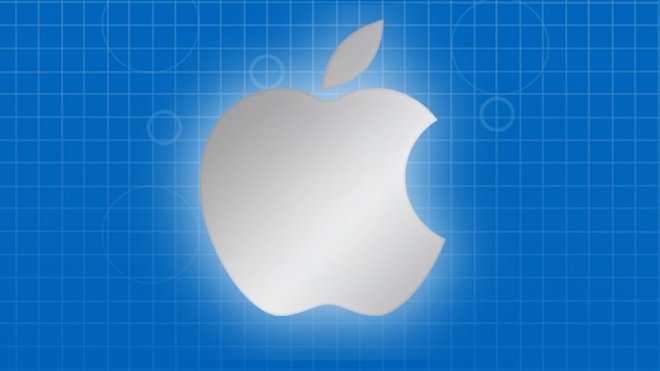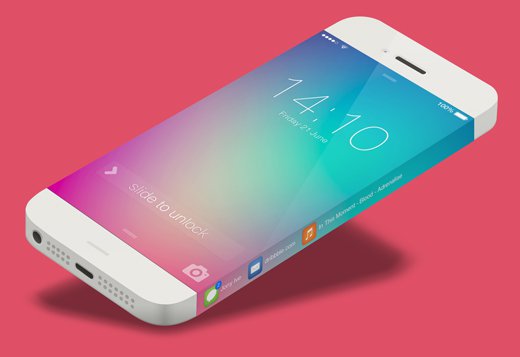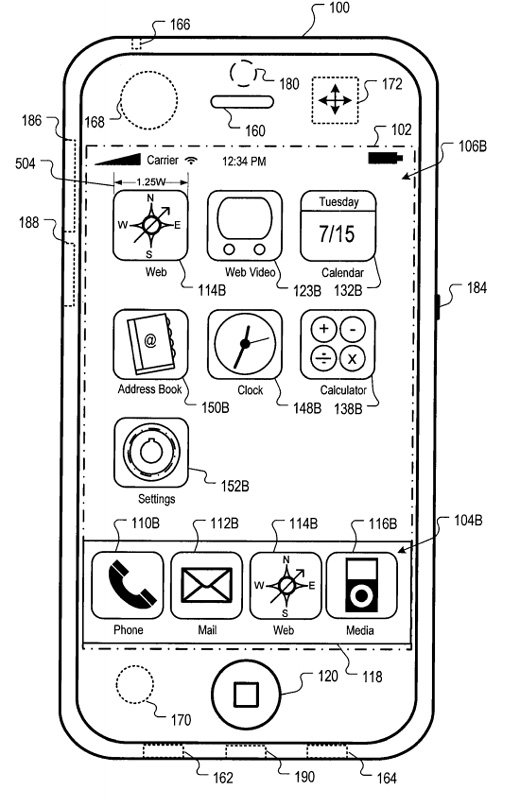
There are many clues about future Apple products in Apple’s patent portfolio. Here, we explore the most exciting of Apple’s patents to see what we can uncover about unreleased products, including the iPhone 7, new iPads, the Apple Watch, upcoming Macs and other future tech What is Apple working on behind the scenes? What can we expect from Apple in 2015 and the years to follow? Here, we explore Apple’s patent portfolio to find out.
Apple is famously secretive, but like all companies it has to issue a list of patents to the USPTO (United States Patent & Trademark Office) and these provide hints at future and upcoming projects.
Apple is known for its patents, which are detailed but often try to disguise product plans with in-depth technicality. In addition to protecting the company’s current product line-up from sneaky copycats, many of those Apple patents outline fascinating technologies that the company is working on or is interested in, and show the direction its products could take in the future.
Here are some key Apple patents that give an insight into the kinds of technology Apple is hoping to use in its future products. You can follow the links below to skip to a particular product, or sit back and relax while we talk you through the best bits of Apple’s entire portfolio.
iPhone 7 | Future iPads | Future Macs | Smartwatch | Accessories | Future tech
What Apple patents say about iPhone 7
Many of Apple’s patents could be applied to future versions of its iPhone, perhaps even the upcoming iPhone 6S or iPhone 7. Here are just a few of them.
Apple iPhone 7 patents: Sidewall displays

Concept by Michael Shanks.
In May 2014, Apple was granted a patent for “Electronic devices with sidewall displays,” which, if ever used, could mean our iPhones and iPads may one day have displays around the sides and edges, as well as on the front. The patent suggests that the sidewall displays could be an extension of the main touchscreen, and they could have interactive or touch sensitive portions.
Apple has several ideas about what the sidewall displays could be used for. In some embodiments, Apple suggests that some app icons can be displayed there, or that the displays could be used for slide-to-unlock functionality, music player controls, messaging readout, caller ID, system controls and more.
Samsung has actually released the Galaxy Note Edge, which has a display that wraps around one edge of the smartphone. You can find out more about the Galaxy Note Edge here.

There are many clues about future Apple products in Apple’s patent portfolio. Here, we explore the most exciting of Apple’s patents to see what we can uncover about unreleased products, including the iPhone 7, new iPads, the Apple Watch, upcoming Macs and other future tech What is Apple working on behind the scenes? What can we expect from Apple in 2015 and the years to follow? Here, we explore Apple’s patent portfolio to find out.
Apple is famously secretive, but like all companies it has to issue a list of patents to the USPTO (United States Patent & Trademark Office) and these provide hints at future and upcoming projects.
Apple is known for its patents, which are detailed but often try to disguise product plans with in-depth technicality. In addition to protecting the company’s current product line-up from sneaky copycats, many of those Apple patents outline fascinating technologies that the company is working on or is interested in, and show the direction its products could take in the future.
Here are some key Apple patents that give an insight into the kinds of technology Apple is hoping to use in its future products. You can follow the links below to skip to a particular product, or sit back and relax while we talk you through the best bits of Apple’s entire portfolio.
iPhone 7 | Future iPads | Future Macs | Smartwatch | Accessories | Future tech
What Apple patents say about iPhone 7
Many of Apple’s patents could be applied to future versions of its iPhone, perhaps even the upcoming iPhone 6S or iPhone 7. Here are just a few of them.
Apple iPhone 7 patents: Sidewall displays

Concept by Michael Shanks.
In May 2014, Apple was granted a patent for “Electronic devices with sidewall displays,” which, if ever used, could mean our iPhones and iPads may one day have displays around the sides and edges, as well as on the front. The patent suggests that the sidewall displays could be an extension of the main touchscreen, and they could have interactive or touch sensitive portions.
Apple has several ideas about what the sidewall displays could be used for. In some embodiments, Apple suggests that some app icons can be displayed there, or that the displays could be used for slide-to-unlock functionality, music player controls, messaging readout, caller ID, system controls and more.
Samsung has actually released the Galaxy Note Edge, which has a display that wraps around one edge of the smartphone. You can find out more about the Galaxy Note Edge here.

Apple iPhone 7 patents: Accident-free buttons
In May 2014, a patent titled “Configurable Buttons for Electronic Devices” was published by USPTO, describing a touch-sensitive button that could help prevent accidental inputs. The patent covers a physical button that also has a touch sensor, which would know when a user’s finger is touching it rather than another object in a bag.
The buttons highlighted in Apple’s patent include the power, sleep, menu, volume and multipurpose buttons that are physical on most mobile devices and are therefore prone to accidental input.
Apple’s Touch ID home button uses similar technology to the technology described in this patent, though it’s also used as a security measure thanks to a fingerprint scanning authentication method.
Apple iPhone 7 patents: Greater touch accuracy
Along the same lines, Apple has been awarded a patent that could help prevent accidental touch input from iPhone users on the move.
The patent describes a “variable device graphical user interface” that adapts to movement using sensors that detect patterns of motion. This could make it possible to use an iPhone while running or jogging, for example.
![]()
Apple iPhone 7 patents: Curved display
A patent has been awarded to Apple for the method of manufacturing curved touchscreens, which could mean that the iPhone 6S or other future iPhone or iPad could have a curved display like the LG G Flex 2.
Apple iPhone 7 patents: Flexible iPhone
Taking that even further, in January 2015 Apple was awarded a patent that suggests that the company is investigating the idea of a flexible iPhone (and we’re not talking about the #Bendgate kind).
The Patent suggests that, by making the iPhone flexible, the user could open a specific application by bending it in a particular way, or even use the flexibility to control a game.
Additionally, by making the iPhone flexible, the device should be more resistant to impacts and therefore more durable.
Apple iPhone 7 patents: Your face is your password
In December 2014, USPTO awarded Apple a patent relating to a “personal computing device control using face detection and recognition.”
With the iPhone 6 and now the Apple’s latest iPads, you can unlock the device using just your fingerprint thanks to the Touch ID sensor, but with this patent, future iPhones and other devices could be unlocked using facial recognition. So effectively, your face could soon become your password.
Apple iPhone 7 patents: Advanced Touch ID fingerprint sensor
A mammoth 612-page patent application filed by Apple in May 2014 and published by the World Intellectual Property Organisation in November reveals that Apple is investigating further uses for its fingerprint sensing technology.
The Touch ID, introduced with the iPhone 5s, is just the beginning of what Apple could use the technology for. Keeping the sensor beneath the Home button but adding further functionality is one of the features Apple mentions in the patent. For example, Apple could introduce gestures to the Touch ID Home button.
Apple iPhone 7 patents: Touch ID display
Apple is even investigating including the fingerprint scanner into the display of a smartphone or tablet, taking the technology even further. In fact, Apple filed a patent describing a Touch ID display back in January 2013.